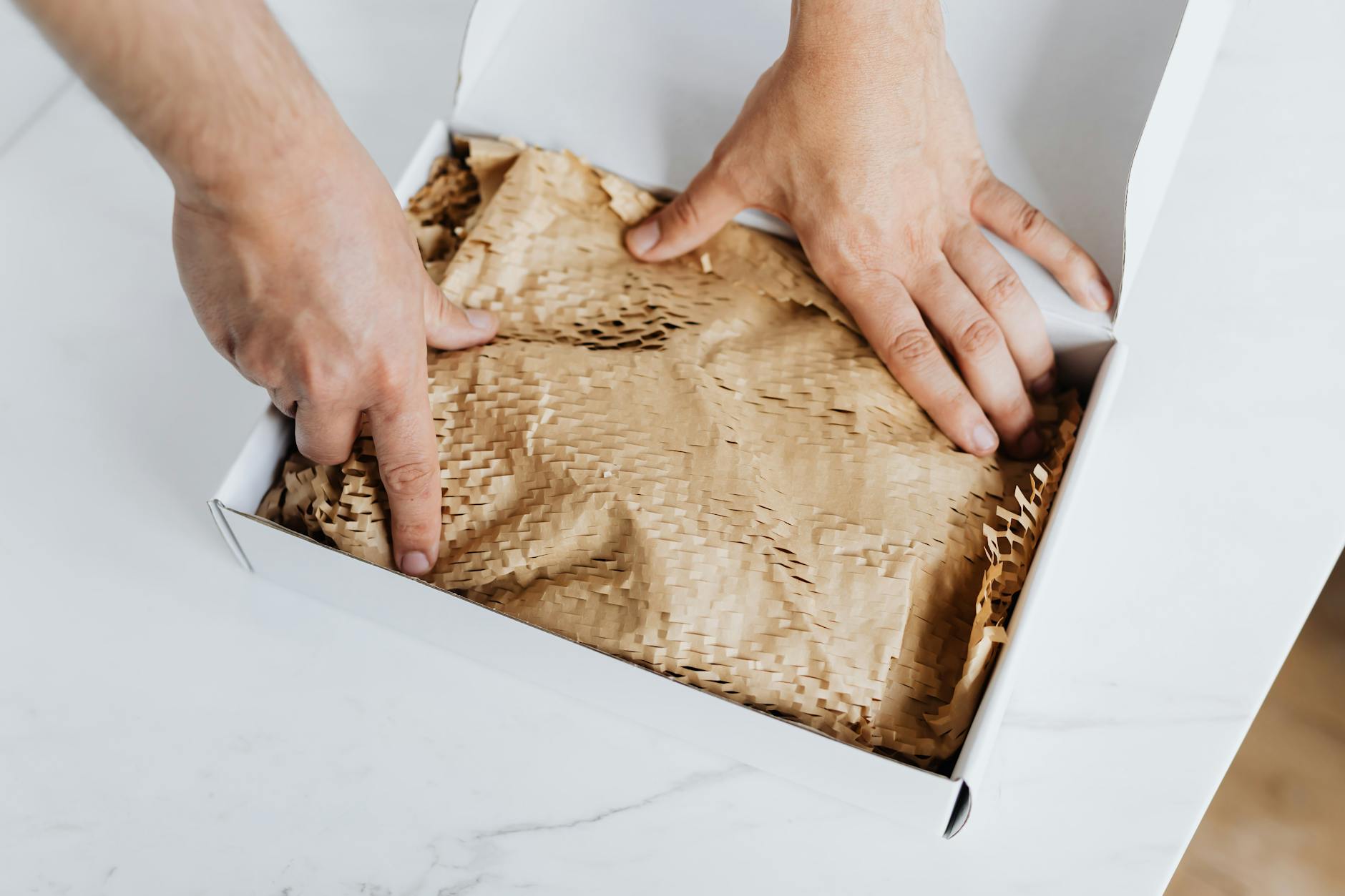Discover the essential steps to launching a successful Amazon FBA business with this comprehensive beginner’s guide. Get started today!
Table of Contents
- Introduction to Amazon FBA
- The ABCs of Amazon FBA Business
- Setting Up Your Amazon FBA Account
- Learning from the Community
- Mastering Amazon FBA with Courses
- Finding Your Niche Product
- Inventory Management
- Understanding Amazon’s Rules and Fees
- Marketing Your Products
- Wrapping Up and Taking Action
- Frequently Asked Questions (FAQs)
Introduction to Amazon FBA
Have you ever wondered how people sell products on Amazon without having to worry about storing, packing, or shipping them? Well, that’s where Amazon FBA comes in! FBA stands for Fulfillment By Amazon, and it’s a service that helps individuals and businesses like you sell products on the world’s largest online marketplace, Amazon.
Imagine you have a garage full of items you want to sell, but you don’t have the space or time to handle all the logistics of fulfilling orders. With Amazon FBA, you can send your products to Amazon’s warehouses, and they take care of storing, packing, and shipping them to customers on your behalf. It’s like having your own team of helpers working behind the scenes to make sure your customers get their orders quickly and efficiently.
So, in simple terms, Amazon FBA allows you to focus on finding great products to sell while Amazon handles the nitty-gritty details of order fulfillment. It’s a convenient and hassle-free way to start and grow your online business.
The ABCs of Amazon FBA Business
Starting an Amazon FBA business is like embarking on an exciting adventure where you get to sell products online without the hassle of storing, packaging, and shipping them yourself. Let’s dive into the basics of this amazing opportunity!
Getting Ready to Sell
Before you can start selling on Amazon, you’ll need a few things in place. First, you must decide what products you want to sell. It’s also essential to create an Amazon seller account, set up a bank account to receive payments, and invest in products to sell through FBA.
Why Choose FBA?
Amazon Fulfilled by Amazon (FBA) is a fantastic choice for your online business because it handles all the logistics for you. From storing your products in Amazon’s warehouses to packing and shipping orders to customers, FBA takes care of it all. You can focus on growing your business while Amazon handles the rest!
Setting Up Your Amazon FBA Account
So, you’ve decided to start your Amazon FBA journey. The first step is setting up your FBA account, which will enable you to sell products on Amazon and take advantage of their fulfillment services. Let’s walk through the process of creating your account and getting ready to list your products.
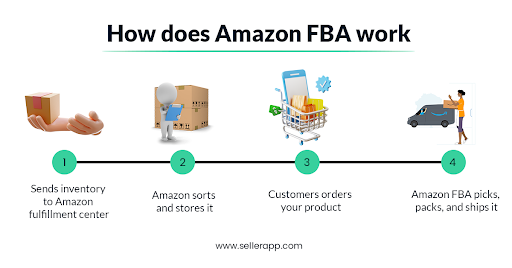
Image courtesy of www.sellerapp.com via Google Images
Creating Your Seller Profile
Creating a standout seller profile is crucial for attracting potential customers. Start by setting up an Amazon Seller Account. Provide all the necessary information about your business, such as contact details, business name, and payment information. Make sure to verify your identity to ensure a smooth selling experience.
Listing Your Products
Once your seller profile is set up, it’s time to list your products for sale. Ensure that your products meet Amazon’s guidelines and are eligible for FBA. Take high-quality photos of your products and write compelling product descriptions that highlight their key features. Set competitive prices to attract buyers and optimize your listings for search engines.
By following these steps, you’ll be well on your way to setting up your Amazon FBA account and getting your products ready for sale on one of the world’s largest online marketplaces.
Learning from the Community
When you’re starting your Amazon FBA journey, the Reddit Amazon FBA community can be a treasure trove of valuable information. On Reddit, experienced sellers share tips, tricks, and strategies to help newcomers navigate the complex world of online selling. You can find discussions on product sourcing, pricing strategies, dealing with suppliers, and much more. By actively participating in these forums, you can gain insights that can help you avoid common pitfalls and make smarter decisions for your business.
Community Support
Building a network of like-minded individuals who are also embarking on their Amazon FBA business can be incredibly beneficial. The community support you receive from fellow sellers can provide encouragement, advice, and motivation when you hit roadblocks or feel unsure about your next steps. Whether it’s sharing success stories, commiserating over challenges, or celebrating milestones, having a supportive community can make your entrepreneurial journey less lonely and more rewarding.
Mastering Amazon FBA with Courses
When it comes to excelling in your Amazon FBA business, taking a dedicated course can be a game-changer. These courses are designed to equip you with the knowledge and skills needed to navigate the complexities of selling on Amazon and maximize your business potential.
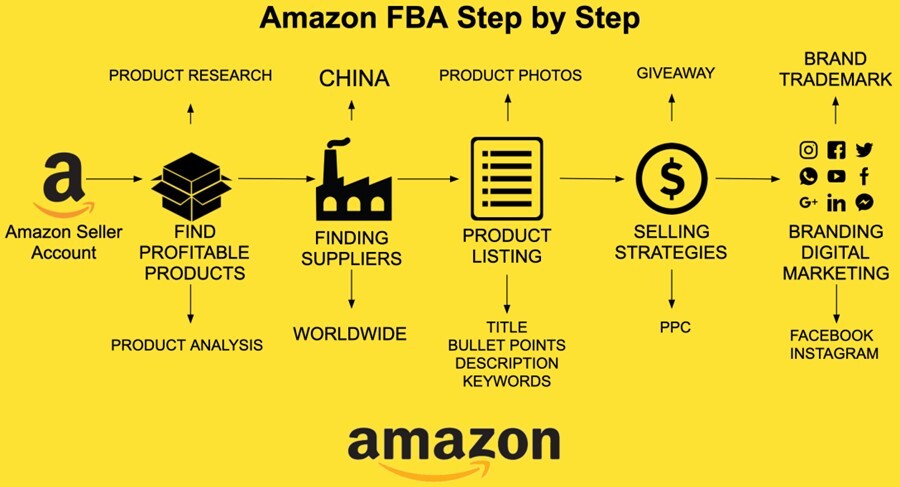
Image courtesy of www.ejet.com via Google Images
Choosing the Right Course
Not all Amazon FBA courses are created equal, so it’s essential to choose one that aligns with your learning style and goals. Look for courses that are taught by experienced instructors, cover a wide range of topics related to Amazon FBA, and provide hands-on learning opportunities.
What to Expect from a Course
Typically, Amazon FBA courses cover important aspects such as product sourcing, inventory management, marketing strategies, and understanding Amazon’s rules and fees. By enrolling in a course, you can expect to gain valuable insights and practical skills that will help you succeed in your FBA business.
Finding Your Niche Product
Before diving into selling products on Amazon FBA, it’s crucial to do your research and analyze which products are in demand. Take some time to explore different categories and products that interest you. Look for items that have a consistent track record of selling well. You can use tools like Amazon Best Sellers and Google Trends to identify trending products. Remember, choosing the right product is the foundation of a successful Amazon FBA business.
Considering the Competition
Knowing your competition is key to understanding the market and positioning your product effectively. Check how many sellers are offering similar products and assess their pricing, customer reviews, and overall product quality. By understanding the competition, you can find ways to differentiate your product and attract customers. Keep in mind that healthy competition can also indicate a thriving market, so don’t be discouraged by others selling similar products. Instead, focus on what sets your product apart and how you can deliver value to your customers.
Inventory Management
Keeping track of your inventory is crucial for running a successful Amazon FBA business. By knowing exactly how many products you have in stock, you can avoid running out of popular items and disappointing your customers. One simple strategy is to use spreadsheets or inventory management software to record all incoming and outgoing products accurately.
| Step | Description |
|---|---|
| 1 | Register for an Amazon Seller account |
| 2 | Choose the FBA option when setting up your account |
| 3 | Create product listings for the items you want to sell |
| 4 | Prepare your products for shipment to Amazon’s fulfillment centers |
| 5 | Generate shipping labels and send your products to Amazon |
| 6 | Amazon will store, pack, and ship your products to customers |
| 7 | Monitor sales and manage your inventory through your Seller account |
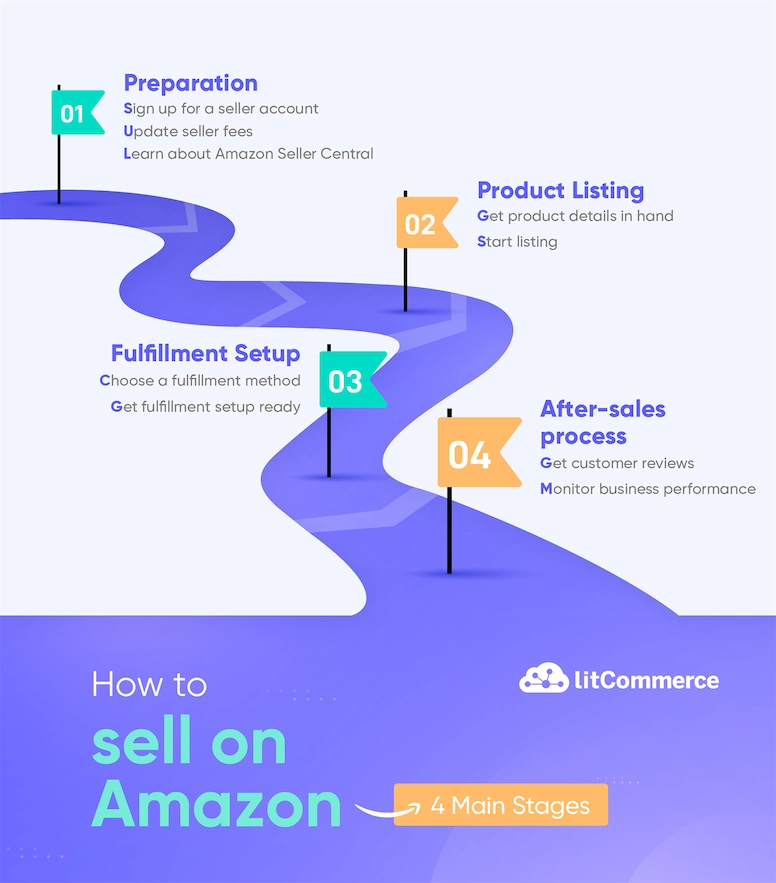
Image courtesy of litcommerce.com via Google Images
Avoiding Stockouts and Overstocking
It’s important to find the right balance when it comes to your inventory levels. Stockouts, where you run out of a product, can lead to lost sales and unhappy customers. On the other hand, overstocking ties up your money in unsold products and may incur additional storage fees. By monitoring trends, sales data, and seasonal fluctuations, you can maintain a healthy stock level that meets customer demand without excess.
Understanding Amazon’s Rules and Fees
When you sell products through Amazon FBA, there are certain fees you need to be aware of. These fees help cover the costs of storing, packing, and shipping your products. Here are the main types of fees you might encounter:
The first fee you might come across is the fulfillment fee. This fee is charged for the storage of your products in Amazon’s warehouses and the picking, packing, and shipping of your orders. The size and weight of your product will affect how much you are charged for fulfillment.
In addition to the fulfillment fee, there are other fees to consider, such as the referral fee. This fee is a percentage of the total price of your product that Amazon takes as commission for facilitating the sale. It’s important to factor in these fees when setting your product prices to ensure you make a profit.
Amazon also charges other fees, like long-term storage fees for products that have been in their warehouses for an extended period. Understanding and budgeting for these fees is crucial for the success of your Amazon FBA business.
Staying in Good Standing
As an Amazon seller, it’s essential to follow Amazon’s rules and regulations to maintain a good standing on the platform. Violating these rules can lead to penalties, account suspension, or even permanent banning from selling on Amazon.
Some key rules to keep in mind include providing accurate product information, ensuring quick and reliable shipping, and offering excellent customer service. By adhering to these rules, you can build trust with customers and increase your chances of success on Amazon.
It’s also important to stay informed about any policy updates or changes that Amazon introduces. Being proactive in understanding and complying with Amazon’s rules will help you avoid any potential issues and keep your business running smoothly.
Marketing Your Products
In order to make sure your products stand out on Amazon and attract shoppers, it’s important to use smart marketing strategies. Here are some tips on how you can effectively market your products on the platform:
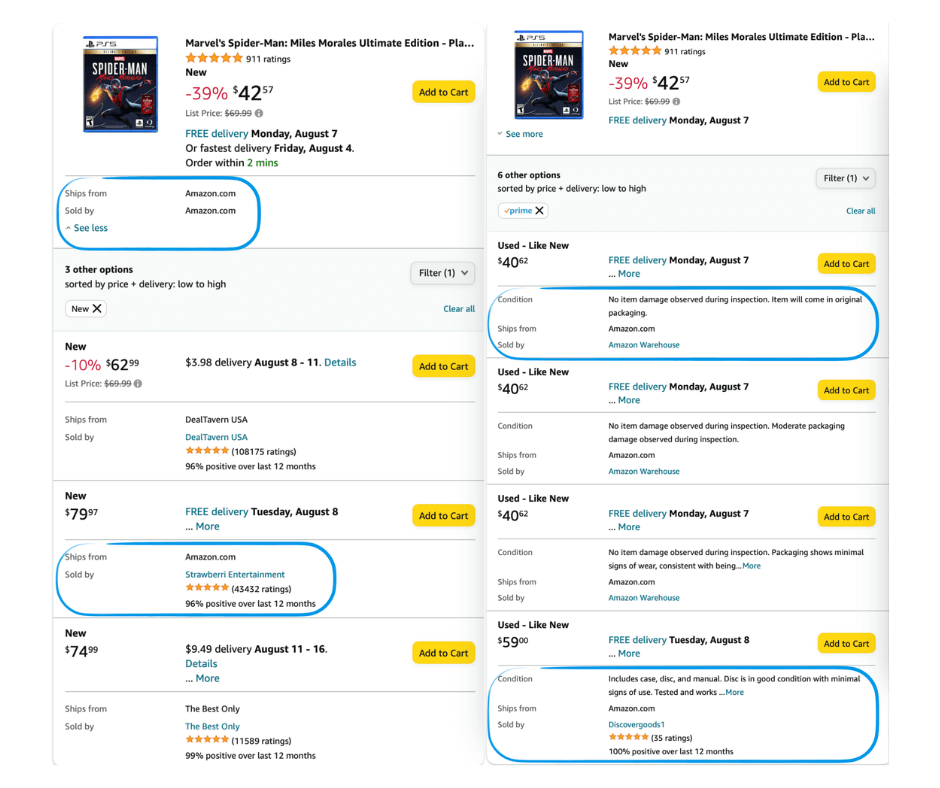
Image courtesy of sellerengine.com via Google Images
Optimizing Product Listings
When creating your product listings on Amazon, make sure to use high-quality images that showcase your products in the best light. Write clear and detailed product descriptions that highlight the key features and benefits. Use relevant keywords in your titles and descriptions to improve your products’ visibility in search results.
Using Amazon Ads
Amazon offers a variety of advertising options to help boost your product sales. You can use Sponsored Products ads to promote individual listings, or Sponsored Brands ads to showcase a collection of products. Advertising on Amazon can help increase your products’ visibility and drive more traffic to your listings.
Wrapping Up and Taking Action
As we come to the end of our Amazon FBA 101 guide, let’s recap the essential points we’ve covered and motivate you to take the first step towards launching your very own Amazon FBA business.
Key Takeaways
Throughout this article, we’ve explored the world of Amazon FBA, learned about the benefits of using this platform for selling products, delved into setting up an FBA account, and discovered the value of learning from the community and taking courses to master your online business skills. We’ve also discussed the importance of finding the right niche product, managing your inventory effectively, understanding Amazon’s rules and fees, and marketing your products to attract customers. Each of these elements is crucial for running a successful Amazon FBA business.
Time to Take Action!
Now that you have a solid understanding of the basics of Amazon FBA, it’s time to put your knowledge into action. If you’re passionate about starting your own online business and are willing to put in the effort to make it succeed, Amazon FBA could be the perfect opportunity for you. Take the first step today by researching potential products to sell, creating your seller profile, and listing your products on Amazon. Remember, the journey of a thousand miles begins with a single step!
Frequently Asked Questions (FAQs)
As you learn more about Amazon FBA, you might have some questions popping up. Here are some common queries that kids like you often have:
Can kids start an Amazon FBA business?
It’s awesome that you’re curious about starting your own business! Unfortunately, Amazon requires sellers to be at least 18 years old. However, you can always team up with a parent or guardian who can help you run the business until you’re old enough to do it yourself. Remember, it’s never too early to start learning about entrepreneurship!
How much money do I need to start an Amazon FBA business?
Starting an Amazon FBA business doesn’t have to break the bank. You can begin with as little as a few hundred dollars to cover initial product costs and listing fees. As you grow your business, you’ll need to budget for things like inventory, shipping, and other expenses. It’s all about starting small and scaling up over time!
